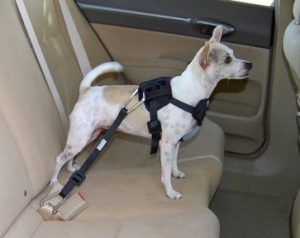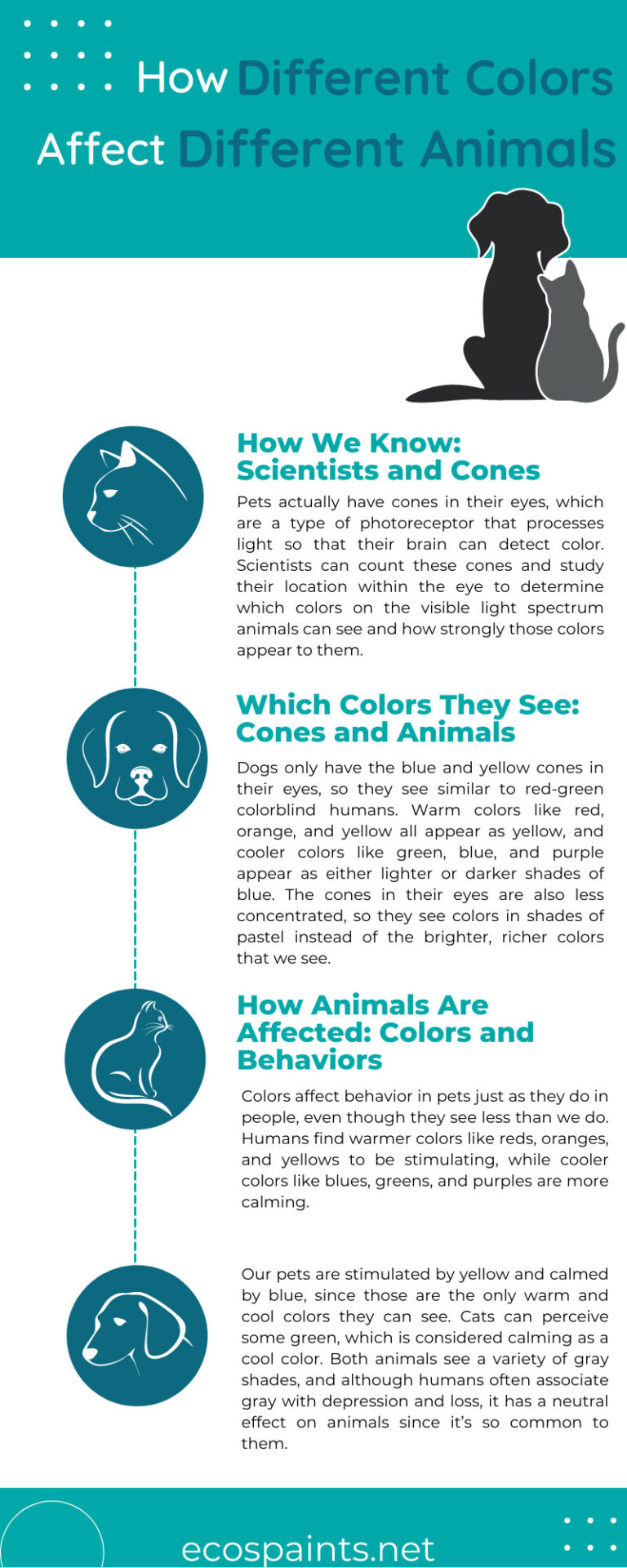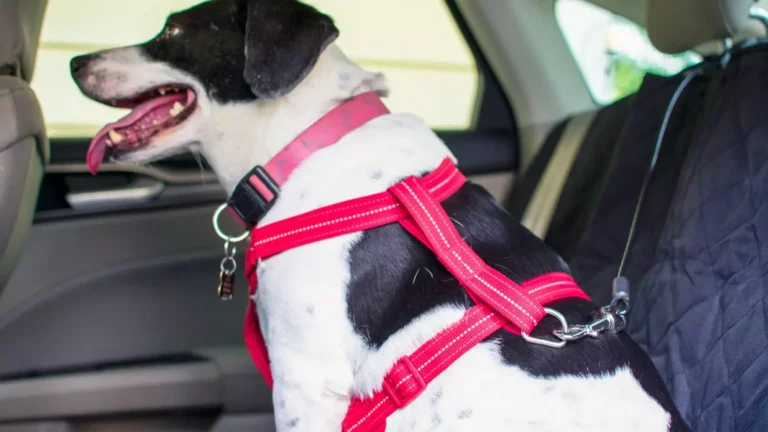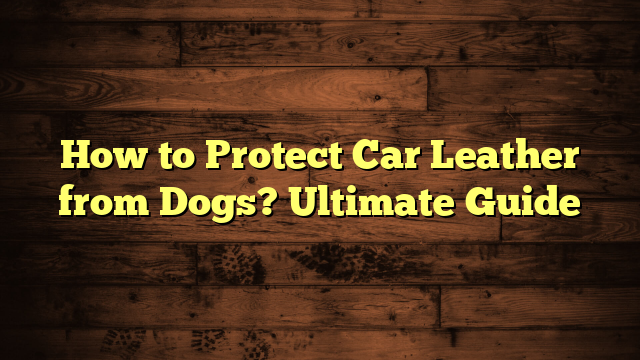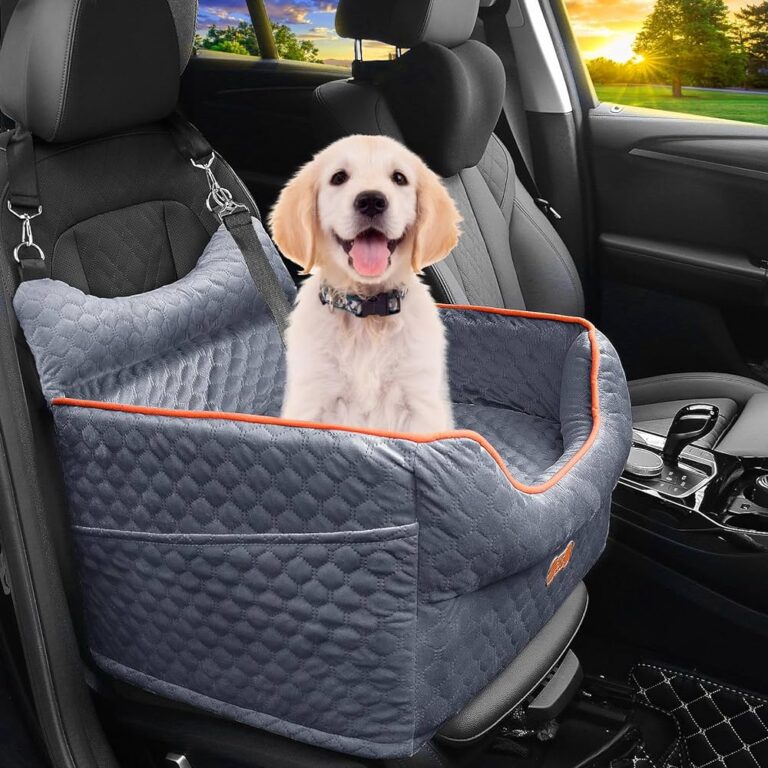How to Protect Seat Belts from Dogs? Essential Tips
Use a seat belt cover or protector to shield seat belts from dog damage. Train your dog to stay calm in the car.
Dogs can be enthusiastic travelers, but their excitement can lead to chewed or scratched seat belts. Protecting seat belts from dogs is essential to maintain your car’s safety features and interior aesthetics. A seat belt cover or protector offers a practical solution, guarding against wear and tear.
Training your dog to remain calm and secure during car rides also minimizes potential damage. These measures ensure both your pet’s safety and your vehicle’s longevity. Investing in pet-friendly car accessories can make journeys more enjoyable and stress-free for both you and your furry friend.

Credit: www.amazon.com
The Perils Of Pooches On Seat Belts
Dogs bring joy to car rides, but they can harm seat belts. Keeping seat belts safe from dogs is crucial for both the dog’s and passengers’ safety. Understanding the risks can help prevent damage and ensure a secure journey for everyone.
Chewing Hazards
Dogs love to chew on things, especially when they are anxious or bored. Seat belts are no exception. A chewed seat belt can lose its strength and fail during an accident. To prevent this, offer chew toys and keep your dog entertained during car rides.
- Chew Toys: Provide durable chew toys to distract your dog.
- Training: Teach your dog to avoid chewing on seat belts.
- Seat Covers: Use seat covers to protect seat belts from damage.
Wear And Tear Concerns
Regular car rides with your dog can cause wear and tear on seat belts. Claws and fur can contribute to the deterioration of seat belts. Inspect seat belts regularly for signs of wear.
| Concern | Solution |
|---|---|
| Claw Damage | Trim your dog’s nails to minimize scratching. |
| Fur and Dirt | Use a seat cover or dog car seat to protect seat belts. |
Maintaining seat belts can extend their lifespan and ensure they function properly during emergencies. These simple steps can help keep your car safe and your dog comfortable.
Understanding Canine Behavior
To protect seat belts from dogs, it’s essential to understand their behavior. Dogs often chew on seat belts due to natural instincts or emotional triggers. Addressing these behaviors can save your seat belts from damage.
Chewing As A Natural Instinct
Dogs love to chew. It’s a natural behavior for them. Puppies chew to relieve teething pain. Adult dogs chew to keep their teeth clean and strong. Chewing is also a way for dogs to explore their world. They use their mouths to learn about new objects.
Providing appropriate chew toys can help. Chew toys can satisfy their need to chew. This can keep your seat belts safe.
Boredom And Anxiety: Triggers For Destruction
Dogs often chew when they are bored or anxious. Boredom can lead to destructive chewing. A dog left alone in the car may chew out of boredom. Anxiety can also cause chewing. A dog with separation anxiety may chew to cope with stress.
To prevent this, ensure your dog gets enough exercise. Mental stimulation is also important. Puzzle toys can keep their minds busy. If your dog has anxiety, consider calming solutions. Calming sprays or anxiety wraps can help.
| Trigger | Solution |
|---|---|
| Natural Instinct | Provide chew toys |
| Boredom | Increase exercise and mental stimulation |
| Anxiety | Use calming sprays or anxiety wraps |
By understanding your dog’s behavior, you can take steps to protect your seat belts. This keeps your car safe and your dog happy.
Selecting The Right Restraints
Finding the right restraints for your dog can be challenging. Your dog’s safety and your car’s condition depend on making the right choice. By choosing the correct restraints, you protect both your pet and the seat belts. Here are some tips to help you select the right restraints.
Dog-proof Seat Belt Materials
Consider using seat belts made from durable materials. These materials can withstand chewing and scratching. Look for nylon or polyester seat belts. They are strong and long-lasting. Choose seat belts with reinforced stitching. This adds extra strength and durability.
| Material | Properties |
|---|---|
| Nylon | Strong, chew-resistant, and durable |
| Polyester | Durable, easy to clean, and long-lasting |
Harnesses And Carriers
Using a harness or carrier can keep your dog secure. Harnesses attach to the seat belt and prevent your dog from roaming. Choose a harness that fits snugly but comfortably. Look for adjustable straps for a better fit. Carriers provide a confined space for your dog. They keep your dog safe and protect the seat belts. Opt for carriers with ventilation and soft padding for comfort.
- Harnesses
- Snug fit
- Adjustable straps
- Carriers
- Ventilation
- Soft padding
Barrier Solutions
Barrier solutions are essential for keeping your seat belts safe from dogs. These solutions create a physical barrier between your dog and the seat belts. This helps in preventing chewing, scratching, or other damage. Let’s explore some effective barrier solutions:
Backseat Barriers
Backseat barriers are great for keeping your dog in the backseat. They are easy to install and use. Here are some options:
- Mesh Barriers: These are made of strong mesh fabric. They block your dog from jumping to the front seat.
- Metal Barriers: These are sturdy and durable. They are usually adjustable to fit different car sizes.
- Plastic Barriers: These are lightweight and easy to clean. They also offer a physical block against your dog.
Using Pet Hammocks
Pet hammocks are another effective barrier solution. They hang between the front and back seats. This keeps your dog comfortable and protects the seat belts. Here are some benefits:
- Seat Protection: Pet hammocks cover the seats and seat belts. This protects them from dirt, fur, and scratches.
- Comfort and Safety: Hammocks provide a secure space for your dog. This helps in reducing anxiety and keeps them in place.
- Easy to Clean: Most pet hammocks are machine washable. This makes them easy to maintain.
Installing a pet hammock is simple. Follow these steps:
- Attach the straps to the headrests of the front and back seats.
- Adjust the straps to ensure the hammock is level.
- Make sure the hammock covers the entire backseat area.
Using these barrier solutions can help protect your seat belts from dog damage. They also ensure a safer and more comfortable ride for your furry friend.
Deterrents And Repellents
Dogs love to chew on seat belts. Protecting them can be a challenge. Using deterrents and repellents can help. These methods discourage dogs from chewing. Let’s explore some effective options.
Bitter Sprays And Taste Deterrents
Bitter sprays are easy to use. Spray them on the seat belts. The bad taste will stop dogs from chewing.
- Commercial bitter sprays are available in pet stores.
- Check the ingredients to ensure safety for pets.
- Reapply regularly to maintain effectiveness.
Taste deterrents work similarly. They create an unpleasant taste. Dogs will avoid chewing the seat belts.
- Choose a non-toxic deterrent.
- Apply it evenly on the seat belts.
- Monitor your dog’s reaction and reapply as needed.
Diy Natural Repellents
DIY natural repellents are safe and easy to make. They use common household items. Here are some popular options.
| Repellent | Ingredients | Instructions |
|---|---|---|
| Vinegar Spray | White vinegar, water | Mix equal parts. Spray on seat belts. |
| Lemon Juice | Lemon juice, water | Mix one part lemon juice with two parts water. Spray on seat belts. |
| Cayenne Pepper | Cayenne pepper, water | Mix a teaspoon of cayenne pepper with water. Spray on seat belts. |
Using natural repellents has benefits. They are safe and eco-friendly. Always test a small area first. Ensure your dog does not have allergies.

Credit: www.walmart.com
Training Your Dog For Car Rides
Training your dog for car rides is essential for their safety and your peace of mind. Proper training ensures your dog behaves well and keeps your car’s seat belts safe from damage. Below are some effective methods to train your dog for car rides.
Basic Commands And Car Behavior
Start with basic commands like “sit”, “stay”, and “come”. These commands help control your dog during car rides. Train your dog to follow these commands in the car. Use treats as rewards.
Next, teach your dog to enter and exit the car calmly. Avoid letting them jump in or out. This reduces stress and prevents damage to seat belts. Use a leash to guide them gently.
Once inside, train your dog to stay in a specific area. This could be the back seat or a dog crate. Keeping them in one spot minimizes distractions and protects seat belts from chewing and scratching.
Positive Reinforcement Techniques
Positive reinforcement is key to successful training. Reward your dog with treats, praise, or toys for good behavior. For instance, give a treat when they sit calmly in the car. This encourages them to repeat the behavior.
Use a clicker to mark good behavior. A clicker makes a sound that tells your dog they did something right. Follow the click with a treat. This method helps dogs learn faster and more effectively.
Create a comfortable environment in the car. Use a dog seat cover to protect the seats and seat belts. A comfortable space reduces anxiety and prevents destructive behavior.
Consider short car rides to start. Gradually increase the length of the trips. This helps your dog get used to car rides without stress.
| Training Tip | Purpose |
|---|---|
| Basic Commands | Control and safety |
| Positive Reinforcement | Encouraging good behavior |
| Short Car Rides | Gradual adjustment |
By following these methods, you can ensure your dog enjoys car rides while keeping your seat belts safe. Training takes time and patience, but the results are worth it.
Regular Maintenance Checks
Ensuring your dog’s safety involves regular maintenance of your car’s seat belts. This is essential to keep them in perfect condition. Dogs can chew on seat belts or get them dirty, which can cause damage over time. Regular checks help you spot problems early and maintain safety.
Inspecting Seat Belts For Damage
Regular inspections are key to keeping seat belts in good shape. Look for frayed edges, cuts, or tears on the seat belts. These can weaken their strength. Check the buckle and latch for proper function. Ensure they click securely and release smoothly. Also, examine the retractor mechanism. The belt should pull out smoothly and retract fully without sticking.
When To Replace Your Seat Belts
Replace your seat belts immediately if you notice significant damage. Even minor fraying or cuts can compromise safety. If the buckle or latch is faulty, it’s time for a replacement. A seat belt that doesn’t secure properly poses a risk. Don’t wait if the retractor mechanism fails. A non-retracting belt can’t protect your dog in an accident.
| Check | Action |
|---|---|
| Frayed Edges | Replace the seat belt |
| Cuts or Tears | Replace the seat belt |
| Buckle Doesn’t Click | Fix or replace the buckle |
| Latch Doesn’t Release | Fix or replace the latch |
| Retractor Issues | Fix or replace the retractor |
By following these steps, you ensure your dog’s safety during car rides. Regular maintenance checks are crucial to prevent accidents and keep everyone safe.
First Aid For Damaged Seat Belts
Dogs can be rough on seat belts. Chewing and scratching can cause serious damage. Fixing them quickly is important for safety. Here are some first aid tips.
Temporary Fixes
Temporary fixes can help until you get professional help. Use duct tape to cover small cuts or tears. This can prevent further damage.
Safety pins can hold frayed ends together. But use them only for a short time. Fabric glue can also be useful. Apply a small amount to the torn area. Let it dry completely before use.
For more severe damage, try a seat belt repair kit. These kits are available online. They come with instructions for quick fixes.
Seeking Professional Help
Temporary fixes are not a long-term solution. Seek professional help to ensure safety. Visit an auto repair shop for a thorough check. Experts can replace damaged seat belts if needed.
Consult your car’s manual for guidance. It may have specific instructions for seat belt repair. If under warranty, contact the manufacturer for free repairs.
For severe damage, a licensed mechanic is the best option. They have the right tools and skills. This ensures the seat belt is safe for use.
Balancing Safety And Comfort
Balancing safety and comfort for your dog during car rides can be challenging. Protecting seat belts from dogs requires thoughtful planning and the right accessories. Ensuring both you and your pet enjoy the journey is key.
Comfort Accessories For Dogs
Using comfort accessories can help keep your dog cozy and calm. Consider using dog seat covers. These covers protect your car seats and seat belts from dirt and scratches. Another great option is a dog harness. A harness attaches to the seat belt and keeps your dog secure.
Dog car seats provide a safe and comfortable spot for smaller dogs. They can be installed easily and protect the seat belts from damage. You can also use dog blankets. These add extra comfort and protect the seat belts from fur and claws.
Ensuring Human Safety
It’s vital to ensure the safety of all passengers. Keep your dog restrained to prevent distractions. Unrestrained dogs can become projectiles during sudden stops, posing a danger to everyone.
- Use a dog seat belt. It clips into the car’s seat belt system and keeps your dog secure.
- Pet barriers can be placed between the front and back seats. They keep dogs from climbing into the front seat.
- Install a crate in the back of your car. It provides a safe and secure space for your dog.
Remember to check the condition of your car’s seat belts regularly. Damaged seat belts should be replaced to ensure safety.
By using the right accessories, you can protect your seat belts and ensure a safe and comfortable ride for everyone.

Credit: www.amazon.com
Frequently Asked Questions
How To Protect A Seatbelt From A Dog?
Use a dog seatbelt cover or a chew-resistant dog seatbelt protector. Keep your dog entertained with toys.
What Is The Safest Restraint For A Dog In A Car?
A crash-tested dog harness or a secured pet crate is the safest restraint for a dog in a car.
In What States Is It Illegal To Have An Unrestrained Dog In A Car?
States where it’s illegal to have an unrestrained dog in a car include New Jersey, Rhode Island, and Hawaii. Laws vary by state. Always check local regulations to ensure compliance.
How To Stop Dog Biting Seat?
Train your dog with positive reinforcement. Provide chew toys. Use a pet-safe deterrent spray on seats. Ensure regular exercise. Consult a professional trainer if needed.
Conclusion
Protecting your seat belts from dogs is essential for maintaining your car’s safety and cleanliness. Use seat belt covers, dog harnesses, and regular cleaning to keep them in top condition. These simple steps ensure your seat belts remain intact and functional.
Prioritize your vehicle’s upkeep and enjoy stress-free travels with your furry friend.
- Can I Get in a Taxi Without a Car Seat? - January 26, 2025
- Can I Get Chlamydia From a Toilet Seat? - January 26, 2025
- Can I Get an Uber With a Car Seat? - January 26, 2025


